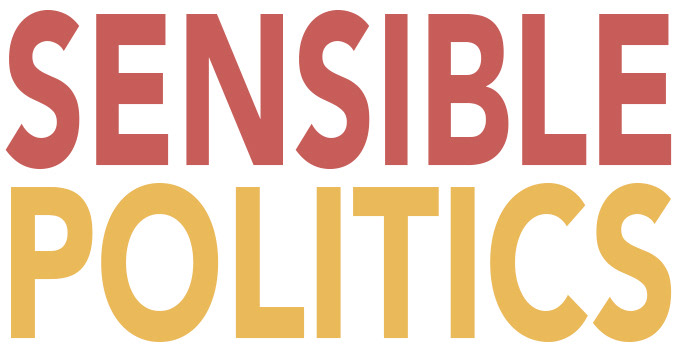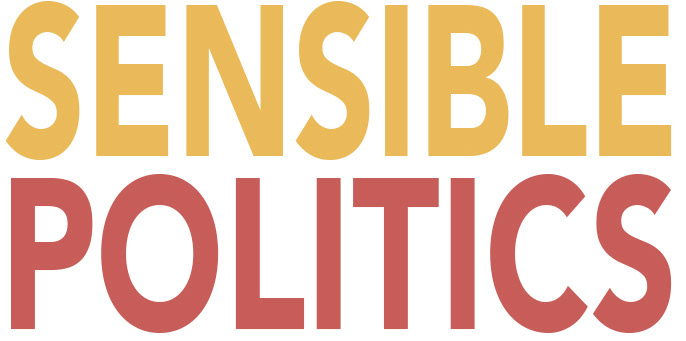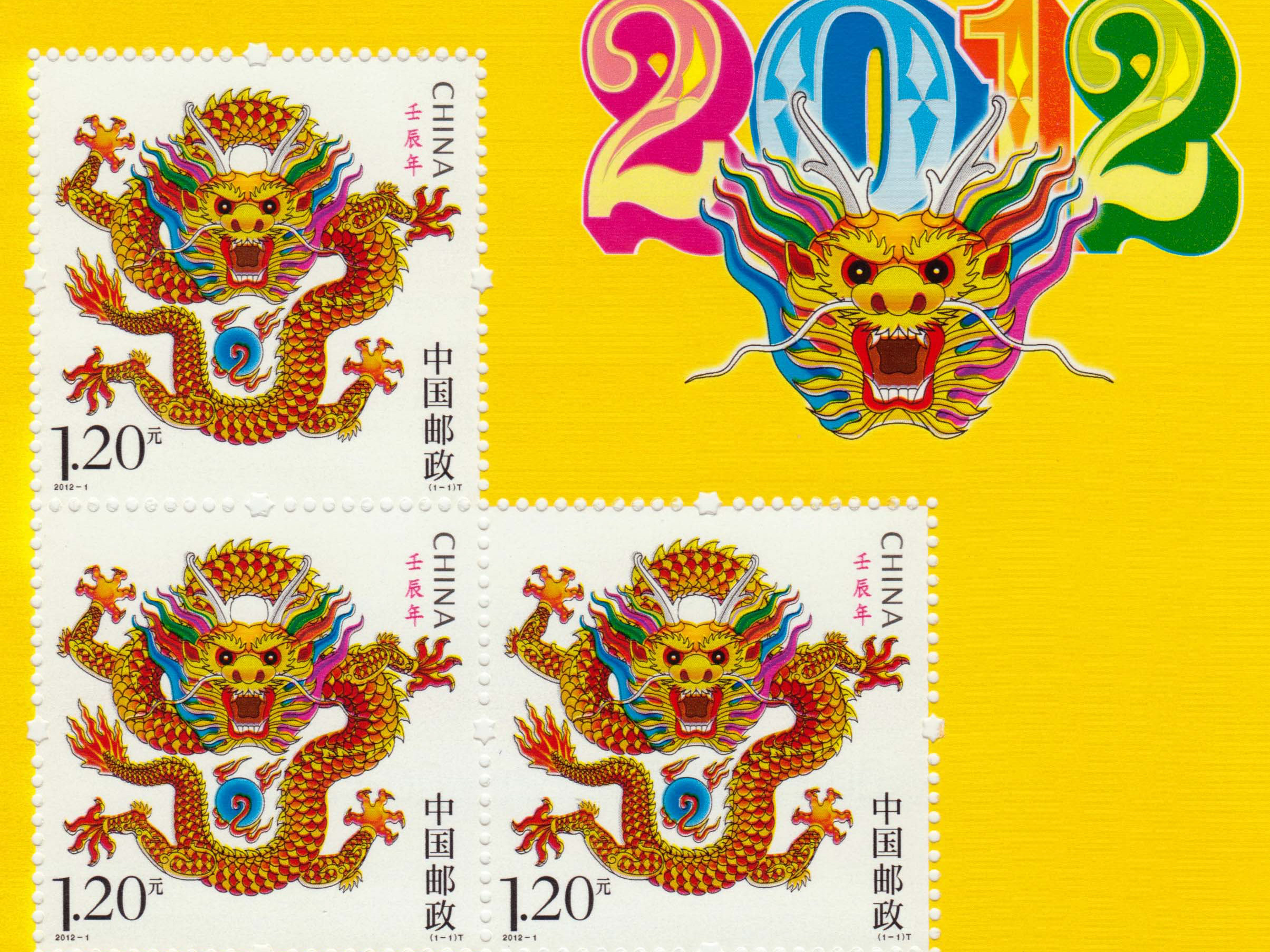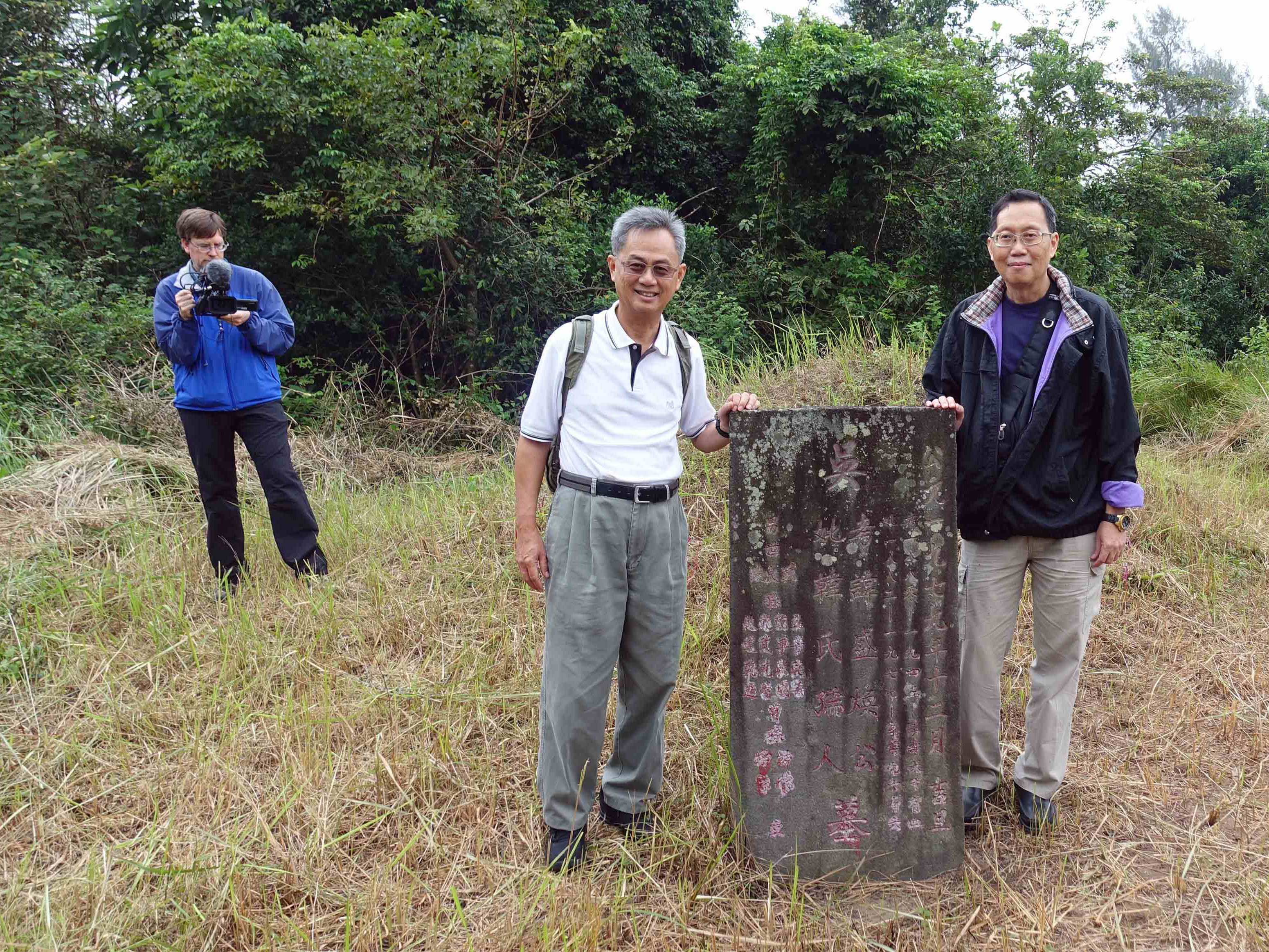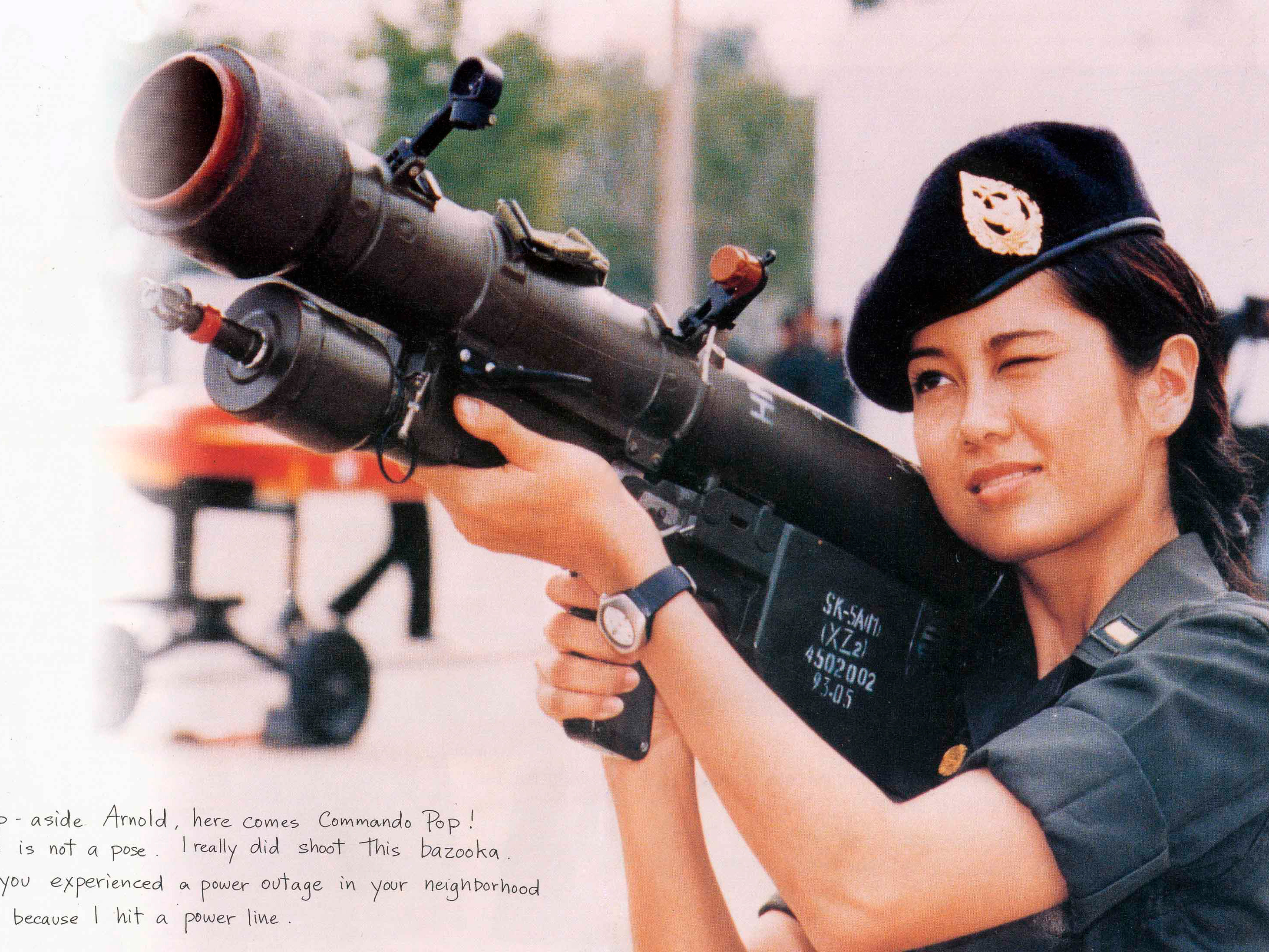Rather than engage in the universals of high theory, my work is more artisanal, examining concepts that emerge from material practices like picture-taking and wall-building
"Chinese Dream, Subway Dream" poster from the Beijing subway (2015)
My PhD is in political theory, and my research uses poststructuralism and Chinese thought to think about society, politics, and international relations. My first IR theory article examined the then-new phenomenon of Chinese-style IR theory (2001). I have followed this up with examinations of how Chinese texts adopt and adapt “Western” concepts like soft power, empire, and the American Dream/China Dream. My work also examines how Chinese writers develop and apply indigenous concepts to broader discussions of IR: civilization/barbarism, harmony, China Threat Theory, Tianxia, national humiliation, and the China model.
Sensible Politics uses my expertise in theory and filmmaking to explore not only what visuals mean, but also how visuals can viscerally move and connect us in “affective communities of sense.”
The book contributes to debates in international studies, visual culture studies, and Asian studies.
A 2500-word taster is published on E-International Relations, and you can buy the book here: Order Now (discount code: ASFLYQ6).
"Europe in 2035" maps Russian predictions of a divided continent (Express Gazeta, 2012)
Sensible Politics explores the visual geopolitics of war, peace, migration, and empire through an analysis of photographs, films, and art. It then expands the critical gaze to consider how “visual artifacts” – maps, veils, walls, gardens, and cyberspace – are sensory spaces where international politics is performed through encounters on the local, national, and world stage.
It uses Chinese aesthetics to develop an artisanal approach to method that is attuned to the practical conventions that guide picture-taking, film-making, map-making, veil-wearing, wall-building, garden-building, and Web-surfing.
JIA Zhangke's "Smog Journeys" (2015) uses masks as an anti-pollution fashion statement -- what does it mean now in the Covid-19 era?
“Sensible politics” isn’t just sensory. It looks beyond icons and ideology to the affective politics of everyday life. It challenges our Eurocentric understanding of international politics by exploring the meaning and impact of visuals from Asia and the Middle East.
Selfie of Ai Weiwei offering tea and a blanket to a refugee in Greece, Human Flow (2017)
Sensible Politics decenters our understanding of social theory and international politics by
(1) expanding from textual analysis to highlight the visual and the multisensory
(2) expanding from Eurocentric investigations of IR to a more comparative approach that looks to Asia and the Middle East
(3) shifting from critical IR’s focus on inside/outside and self/Other distinctions, it draws on Callahan’s documentary filmmaking experience to see critique in terms of the creative processes of social-ordering and world-ordering
(1) expanding from textual analysis to highlight the visual and the multisensory
(2) expanding from Eurocentric investigations of IR to a more comparative approach that looks to Asia and the Middle East
(3) shifting from critical IR’s focus on inside/outside and self/Other distinctions, it draws on Callahan’s documentary filmmaking experience to see critique in terms of the creative processes of social-ordering and world-ordering
The goal is to make readers not only think visually, but also feel visually – and act creatively for a multisensory appreciation of politics.

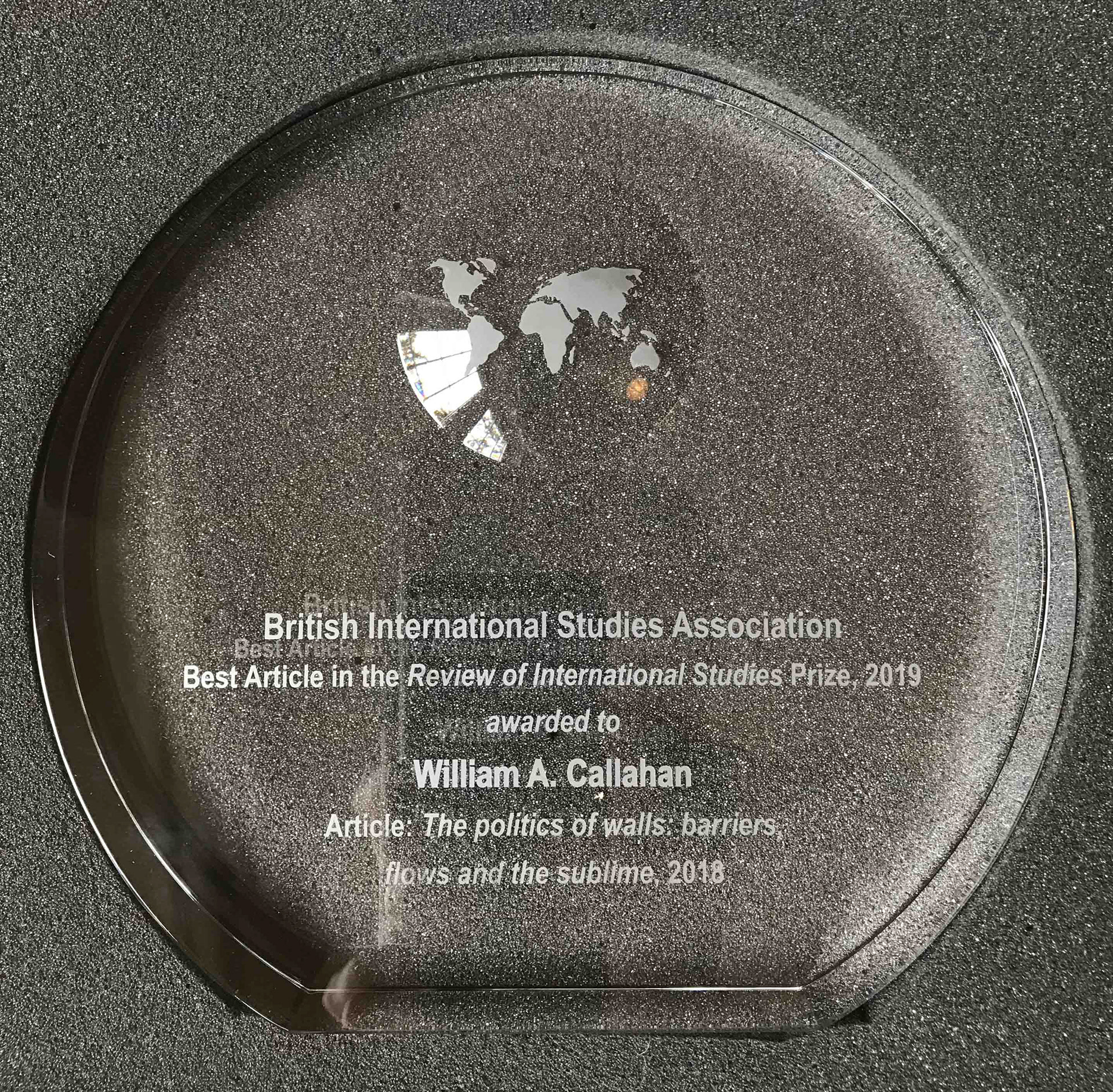
The Politics of Walls: Barriers, Flows, and the Sublime (Chapter 9 of Sensible Politics) won Best Article 2019 from the British International Studies Association and the Review of International Studies
Research for Sensible Politics was supported by an ARI fellowship
